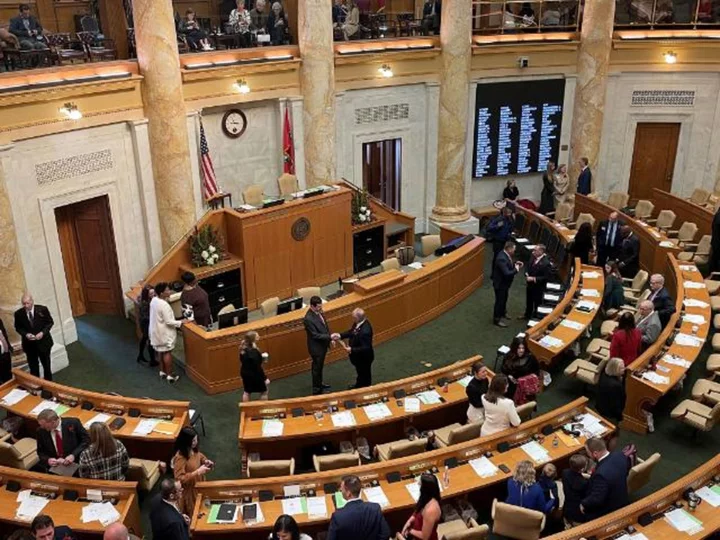Fueled by surging revenues, states have been slashing taxes for individuals and businesses for the past three years.
But the party is expected to come to an end in the coming fiscal year, which started on Saturday in 46 states. Revenue is projected to decline by 0.7% in fiscal 2024, based on forecasts used in governors' budgets, after an estimated 0.3% dip this fiscal year, according to a recently released National Association of State Budget Officers survey.
This reversal comes after double-digit percentage increases for the prior two fiscal years. It reflects the impact of slower economic growth, a weaker stock market and a slew of recent tax cuts.
Reducing taxes
Some 25 states have cut individual income tax rates since 2021, according to the right-leaning Tax Foundation. This includes 22 states that reduced their top marginal rates.
"Most states are viewing tax reform and relief as a chance to, first and foremost, return some of their excess revenue to taxpayers, but to also do that in a way that is simultaneously improving the structure of their tax cuts and make it more conducive to long-term economic growth," said Katherine Loughead, senior policy analyst at the foundation.
States are also seeking to make themselves more attractive to business investment, as well as to remote and traditional workers, she continued.
In 2023 alone, at least eight states approved rate reductions, according to the Tax Foundation. Arkansas, for instance, is trimming its top individual income tax rate to 4.7%, retroactive to January 1, after reducing it from 5.5% to 4.9% last year.
Likewise, Montana lawmakers approved deepening cuts enacted in 2021. Starting in 2024, the top marginal income tax rate will be 5.9%, instead of 6.5% as originally planned. It was 6.9% in 2021.
In addition, previously scheduled or triggered income tax rate reductions took effect this year in Arizona, Idaho, Iowa, Missouri and North Carolina, as well as for interest and dividend income in New Hampshire, according to the Tax Foundation.
Aside from individual income tax cuts, states have also lowered the levies on purchases and for businesses over the past three years. Two states cut sales tax rates, while 13 reduced corporate income tax rates and others made additional tax changes that benefited companies.
In 2023, Nebraska and Utah adopted corporate income tax rate reductions. The former will phase down its top rate to 3.99% in 2027, accelerating an earlier law's timetable. If fully implemented as planned, Nebraska will slash its top marginal corporate income tax rate nearly in half over six years, according to the Tax Foundation.
Utah also further reduced its corporate income tax rate to 4.65%, retroactive to January 1. A law passed last year had cut it to 4.85% for 2022, down from 4.95%.
Weakening revenues
The tax cuts, along with stock market declines and the shaky economy, have taken their toll on states' revenues, however.
State tax revenue fell in 37 states, after adjusting for inflation, between July 2022 and May 2023, according to Lucy Dadayan, principal research associate at the nonpartisan Tax Policy Center. Some 19 states saw declines before taking inflation into account.
Revenue dropped nearly 12% over the period on an inflation-adjusted basis. All major sources of revenue -- personal income, sales and corporate income taxes -- declined, though the extent varies widely by state and source. Individual income taxes were the weakest, plummeting more than 22%.
States are in trouble, though there won't be an immediate crisis, she said. Much depends on factors that remain unknown, such as whether the nation will fall into a recession or whether states will face natural disasters.
The robust revenue of recent years was "artificially boosted" by federal Covid-19 pandemic relief funds and the strong stock market in 2021, she said.
"We knew this is temporary," Dadayan said. "It would have been better if the states wouldn't jump and do tax cuts and be more cautious."
Still, revenues in fiscal 2023 are coming in stronger than initially expected. The current estimates are outperforming earlier forecasts by 6.5%, according to the National Association of State Budget Officers. Most states have also built up big reserves in their rainy day funds in recent years.
Whether states will continue cutting taxes in the coming fiscal year will depend on what happens with revenues.
"A lot of states have done what they can already," Loughead said. "They will continue to look at how revenues come in and how the rates measure up. If they still are experiencing strong surpluses, I do think they might tweak those rates down even more."









